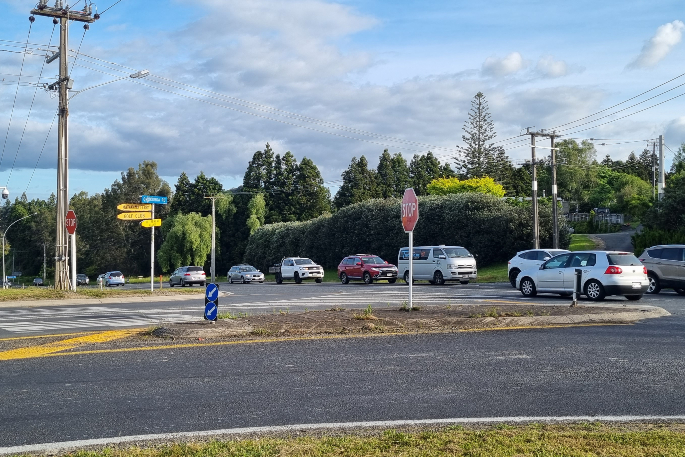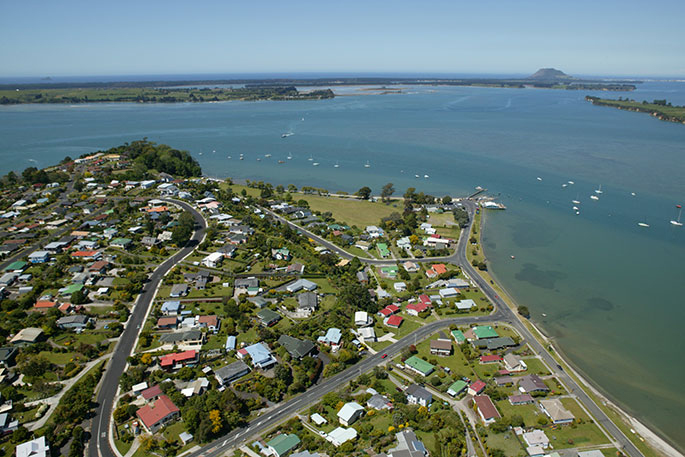New planning rules have been adopted in the Western Bay of Plenty, but one councillor has likened them to “swallowing a dead rat”.
The new rules allow for greater housing density in Ōmokoroa and Te Puke. If the council didn't adopt the rules, it risked losing funding for an essential highway roundabout.
The Western Bay of Plenty District Council adopted the intensification planning rules at an extraordinary council meeting on Wednesday.
The council chose not to adopt the rules in February over concerns the infrastructure wasn’t there to support increased housing.
A workshop was held and the risks the council faced if the planning rules weren’t adopted were explained.
One of these risks was the loss of $46.8 in funding from Kāinga Ora for road upgrades and a roundabout at the intersection of State Highway 2 and Ōmokoroa Road, according to workshop notes.
The roundabout was needed to open up land in Ōmokoroa for housing and also as a safer entrance to SH2.
At Wednesday’s meeting, councillor Rodney Joyce said: “Today we have to swallow a dead rat, it's just a question of which rodent we choose.”
It was a choice of rejecting some “pretty awful” planning rules imposed by the Government and risk infrastructure funding, or adopting them and hoping they didn’t do “too much damage” before they could be changed, he said.
 Councillor Rodney Joyce said the choice was like swallowing a dead rat. Photo: John Borren/SunLive.
Councillor Rodney Joyce said the choice was like swallowing a dead rat. Photo: John Borren/SunLive.
“The biggest risk here in my mind is that very necessary roundabout. We need it, we need it for safety.”
Joyce said the rat he’d chosen was to adopt the planning rules as recommended by staff.
Councillor Anne Henry said: “We're basically between a rock and a hard place, we don't really have any choice in this matter.”
The Government’s medium-density residential standards (MDRS) mean Western Bay’s urban areas of Ōmokoroa and Te Puke are earmarked for greater housing intensification. These areas are projected to have populations over 10,000 in coming years.
The nine standards include allowing three homes on a site, houses up to 11-metres high, half of a site can be buildings, and at least 20m2 of outdoor space must be available.
Homes that meet the standards do not require resource consents but will need building consents.
The previous government made the standards mandatory.
However, the new government said councils can opt into the rules, although the legislation supporting mandatory rules remains in place.
 The council risked funding for a roundabout at the intersection of SH2 and Ōmokoroa Rd if it didn’t adopt the plan change. Photo: Alisha Evans/SunLive.
The council risked funding for a roundabout at the intersection of SH2 and Ōmokoroa Rd if it didn’t adopt the plan change. Photo: Alisha Evans/SunLive.
The council formed an independent hearing panel to hear submissions on this proposal - Plan Change 92 Enabling Housing Supply - in September 2023, with recommendations released in January.
The recommendations are for planning zones and rules in response to submissions.
They must be accepted by the council and if rejected the decision about them is placed in the hands of the Environment Minister.
The council chose to reject four recommendations about indoor railway noise and vibrations, not rezoning land in Ōmokoroa industrial and not rezoning other private Ōmokoroa land as natural open space.
The council recommended to zone land between Francis Rd and Ōmokoroa Rd light industrial but not enable cool stores to be built. It also wanted the other land rezoned as open space, not future urban as recommended by the panel.
Councillor Murray Grainger said the intensification rules shouldn’t come as a surprise to anyone because 22 years ago plans were made for Ōmokoroa with growth projections of more than 10,000 people.
“Our region is desperately short of houses. We need to provide more land for housing so then the question is housing density.”
He said you couldn’t provide homes for 13,000 people in Ōmokoroa on quarter-acre sections, so density was necessary but also a legal requirement.
 Mayor James Denyer said the plan change would lead to better development. Photo: John Borren/SunLive.
Mayor James Denyer said the plan change would lead to better development. Photo: John Borren/SunLive.
Mayor James Denyer said the inevitable loss of funding for the roundabout and the “lack of actual choice” around the standards made the decision more straightforward than it had seemed at the previous meeting.
“This development is happening anyway, this plan change puts in place essential parameters to control that and lead to better development.”
Plan Change 92 will be publicly notified and come into effect on March 13.
LDR is local body journalism co-funded by RNZ and NZ On Air.




0 comments
Leave a Comment
You must be logged in to make a comment.